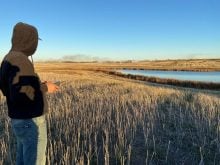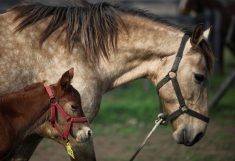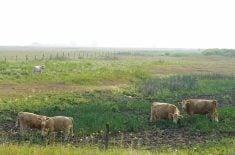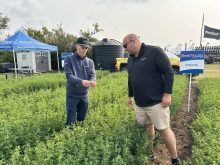A 2022 harvest analysis of livestock feed is helping farmers understand which mycotoxins might affect their livestock.
Every year, the animal feed supplement company Alltech Inc. takes samples from grains and silages across Canada and tests them for several mycotoxins that can affect animal health if found in large enough quantities.
Mycotoxins are stable chemical compounds produced by moulds. They are typically produced when that mould is stressed in some way, usually from drought, excess moisture or hot weather. And, as the name implies, they are toxic to farm animals.
Read Also
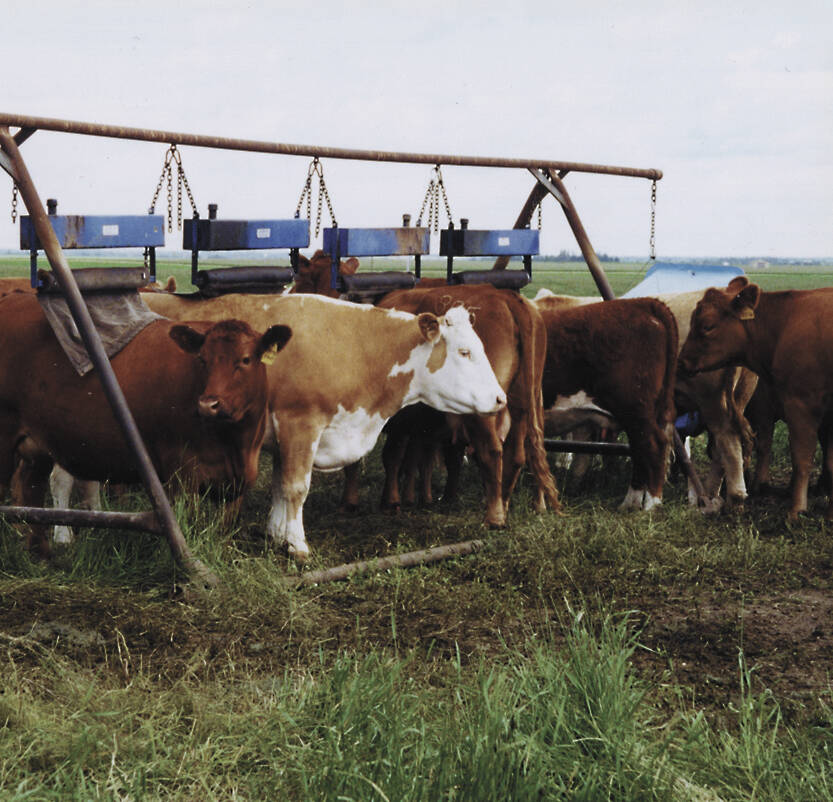
Shifting standards on cattle parasite control
Parasite product resistance has more farmers and veterinarians thinking differently about how to control issues like lice or worms.
“Mycotoxins can be the cause of many problems on the farm, whether we really know it or not,” says Alltech’s Dr. Alexandra Weaver. She notes the chemicals can cause digestive problems, negative impacts on reproduction, changes to the immune system (the way it reacts to pathogens or vaccinations), and overall reduced performance.
More than 500 mycotoxins have been identified, but there are a few types known to have a significant impact on farm animals. Aflatoxin is generally seen more during times of drought and when the days and nights are hot.
Deoxynivalenol (DON), or vomitoxin, is produced by Fusarium graminearum, and it is influenced by rain at flowering.
Zearalenone is produced by the same mould and is often observed with DON. T2 and HT2 toxins are also produced by fusarium moulds, but unlike DON, they are influenced by rain earlier in the season during stem elongation and booting.
“It is important to remember that each of these has a different effect on the animal,” says Weaver. “If they all come together and cause a multiple mycotoxin challenge, this could increase the total risks for the animals we’re observing.”
Manitoba corn
“We saw the presence of a variety of different mycotoxins in corn, with zearalenone having the highest presence in 50 per cent of the samples tested,” says Weaver. This would result in a moderate risk for sows and a high risk for breeding pigs.
There was a low presence of T2 and HT2 toxins and DON, but the levels were significant.
“For pigs, this would result in a moderate risk.”
Poultry are particularly sensitive to the T2 and HT2 toxins, so they are at a higher risk from this particular group of toxins.
Manitoba corn silage
All four mycotoxin groups were seen in the samples tested from corn silage, but zearalenone was the most prevalent and was present in all samples tested. That said, only 10 samples were tested.
“The harvest was a bit delayed here, and we didn’t get as many corn silage samples as we would have liked for this region,” says Weaver, but it does give a sense of what’s happening.
The samples showed mycotoxins present at significant levels: 390 ppb on average and a maximum of 1,446 ppb. T2 and HT2 occurred in 80 per cent of samples, and DON occurred in 75 per cent. Weaver says these levels are concerning.
“If we look at the breakdown of risk, we see that most of these samples are falling into the high-risk category for all of these ruminant groups.”
Although the sample rate was low, Weaver suggests that corn silage could be considered a riskier ingredient in Manitoba.
What to look for
To determine a mycotoxin challenge, “look at your animal signals,” says Weaver. “What are they showing you? The symptoms are often nonspecific or appear to be secondary effects, so it might be harder to see that mycotoxin challenge or catch it quickly.”
Poor vaccination response, increased disease occurrence, gut health challenges, changes to feed efficiency and behavioural changes are potential clues.
“Mycotoxins really aren’t about ‘if’ you have a challenge with them, it’s just how much,” says Weaver. “You’re almost always going to have some level of mycotoxins present.”
The question is whether they are present at levels high enough to be problematic for the animals.
“You also want to remember that multiple mycotoxins are the norm, so when we put all those together, those are going to increase the overall risk to the animal and could change the response that you see in terms of symptoms,” says Weaver.
Be proactive
Getting ahead of a mycotoxin challenge will lower the risk. Feed and ration analysis is recommended, as is careful checking and observation once grains are stored.
Weaver says it’s a good idea to prepare for the costs of a mycotoxin challenge by trying to understand how it will affect feed conversion rates. Producers should also consider the cost of extra health treatments and other production costs.
Finally, she recommends a look at feed formulation. If there is a high-risk ingredient, explore whether an alternative could be used or determine if it could be used at a lower rate.



